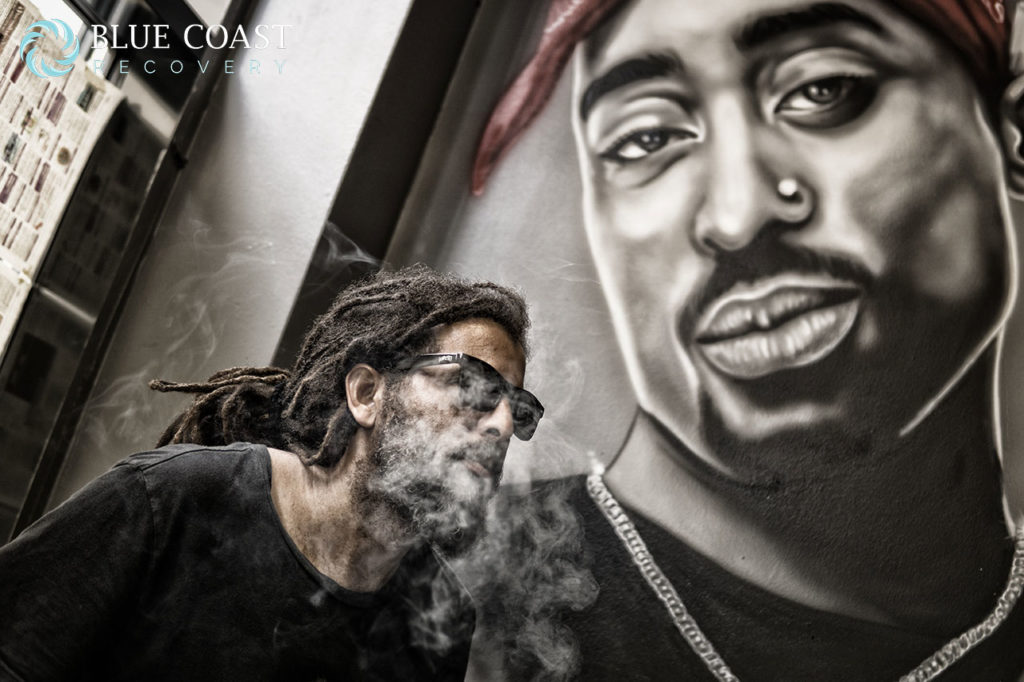If you take a look at the top 20 played songs on your Spotify, what would you find in the lyrics? Chances are a good percentage of those lyrics contain a reference to drugs or alcohol. Substance abuse in music is not breaking news. But is there a correlation between those references and a listener’s use?
What’s in Those Lyrics?
References to drugs and alcohol appear in virtually every musical genre, excluding Christian and classical. Whether the country song you’re listening to mentions a Fireball whiskey whisper or you’re nodding along as J. Cole praises a sip or blunt over powder, substances are in the songs we listen to. They also happen to be significantly more present in hip-hop than other genres.
Project Know conducted a study on the presence of substances in hip-hop songs from 1988 to 2013. Here are the trends:
- Alcohol references rose in the mid-1990s, declined at the start of the millennium, and rose again in 2004 and 2007.
- MDMA (under names such as Molly) saw a surge in 2009 but was relatively absent in music prior.
- Cocaine and marijuana were the most common references in rap songs from 1996 to 2009.
- Pharmaceutical drugs started appearing more frequently in music after 2007.
Musicians and Substance Abuse
For most of us, the pop star lifestyle appears to be one to be coveted. Fame, money, making a living doing exactly what you love . . . it’s the dream, right? Unfortunately, there’s also an insidious cloud that spreads through that exact lifestyle. It goes by the name of substance abuse.
Last year Mac Miller joined a long list of artists whose death was substance-related. The 26-year-old died of an accidental overdose of fentanyl, cocaine, and alcohol. Tom Petty, Prince, and Amy Winehouse are all also on that list.



There are a few key factors that play into the presence of substance abuse in music and the music industry— factors that consequently played into the loss of some of our most beloved artists.
Environment
If you’ve never struggled with substance abuse, you may scoff at the idea that people might use drugs simply because they’re there. But let’s take another look at that. Does it not make sense that the more exposure a person has to drugs or alcohol, the more likely they’d be to use those substances? Musicians basically work in a playground of drugs and alcohol. Just as we see a high occurrence of substance abuse in music, musicians see a high occurrence of those substances in their everyday lives right there at their workplace.
Job
Musicians make their livings playing late night shows where the venue is at least flowing with alcohol, if not drugs too. Their job is to not only play music for hours straight, but also to perform live and loud. The artist is at 100 for four or five hours putting on a monumental live performance. And that performance could very well be the 20th in a tour of 40 shows. It’s not hard to understand how an artist might turn to substances to either try and stay at that level or cope with the stress.
Wealth and Access
Drugs and alcohol can get expensive, especially if you are using them almost nightly to supplement your career. Musicians, pop stars, and artists are all typically more wealthy than the general population. While a homeless addict on the street might have trouble scrounging up the funds for that next hit, artists can afford to sustain that kind of lifestyle.
Mirroring Musicians
“Don’t listen to that rap music or you’ll end up cracked out on the streets!”
Your eccentric, cat-obsessed great aunt Myrtle might have no problem attributing causation to music in regards to a listener’s drug use. However, studies have shown that it’s more of a correlation than cause.
Dr. Erin Morris Miller, an assistant professor of Psychology at Bridgewater College, points out that it is possible that younger teens who look up to these artists might mirror their behavior. However, it’s not exactly the possibility of overdose that should be concerning but rather the potential for a degraded lifestyle.
“Teens are not very good at evaluating risk and tend to underestimate the chance of something negative happening to themselves. . . . the real danger is not overdose but a gradual degrading of one’s standard of living due to lowered grades and missed opportunities as a result of substance use.”
As an added nuance, many people turn to music to either relax or boost their mood. If the artists they’re listening to sing or rap about turning to drugs and alcohol to do the same, the jump to mirroring that behavior isn’t far off.
“Choosing to listen to music with a large number of references to substance use should be seen as a red flag. We are not saying that music is a causal factor, but that students should be aware of why they are choosing a certain kind of music.”
What Can We Do?
Like almost everything else on Earth, music evolves. While past substance references in songs have typically been to glorify or desensitize the lifestyle, more and more songs are starting to tell about the dangers of abuse.
Kendrick Lamar, Chance the Rapper, and Macklemore have all cast a serious and somber tone over substance abuse in their recent songs. The three also join artists like Eminem and Demi Lovato in raising awareness for addiction and its devastation in interviews, tweets, and Instagram posts.
It’s important that we join these artists in the open discussion about substance abuse, addiction, and mental health. Closing the conversation only pushes people into experimenting without adequate knowledge of risk and effects. It also contributes to the stigma surrounding addiction that consequently makes it hard for those who are struggling with addiction to get help.
If you or someone you know is struggling with addiction, our counselors are available 24/7: 714-203-2708




